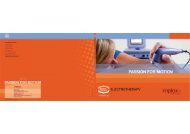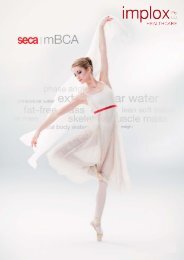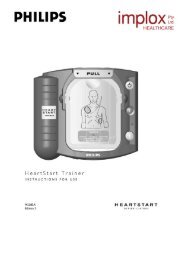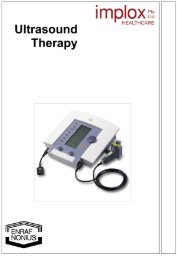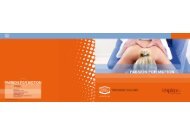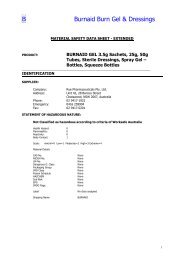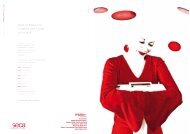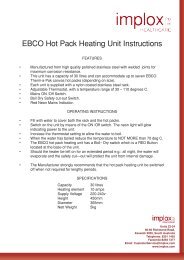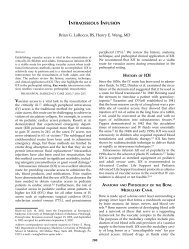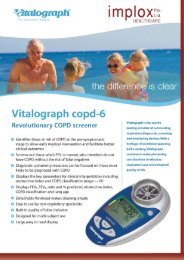Low and medium Frequency Electrotherapy - Implox
Low and medium Frequency Electrotherapy - Implox
Low and medium Frequency Electrotherapy - Implox
You also want an ePaper? Increase the reach of your titles
YUMPU automatically turns print PDFs into web optimized ePapers that Google loves.
Fig. 29.<br />
Schematic representation of a rectangular <strong>and</strong> triangular pulse curve.<br />
The investigation, which is carried out with both rectangular <strong>and</strong> triangular pulses, provides the following parameters:<br />
a. the rectangular pulse curve:<br />
The rheobase:<br />
This is the amplitude that a rectangular pulse of ‘infinite’ duration must have in order to produce a just perceptible<br />
contraction. In practice, the phase duration is the maximum available (500 or 1000 ms, depending on the type of<br />
equipment). The phase interval should be at least twice the phase duration, in order to ensure a single contraction,<br />
<strong>and</strong> to avoid fatigue of the muscle fibres.<br />
The value of the rheobase can vary from one muscle to another.<br />
The ‘temps utile’:<br />
This is the minimum time needed for a rectangular pulse to produce a just perceptible contraction at a current<br />
amplitude equal to the rheobase. For healthy muscle tissue, the temps utile is around 10 µs.<br />
The chronaxy:<br />
The time needed for a rectangular pulse to produce a just perceptible contraction at a current amplitude equal to<br />
twice the rheobase. Normally, the chronaxy is between 0.1 <strong>and</strong> 1 ms.<br />
b. the triangular pulse curve:<br />
The accommodation threshold:<br />
This is the current amplitude that a triangular pulse of ‘infinite’ duration must have in order to produce a just<br />
perceptible contraction. In practice, the phase duration is the maximum available (500 or 1000 ms, depending on the<br />
type of equipment).<br />
The optimum phase time<br />
The phase time required for a triangular pulse at a minimum current amplitude to produce a just perceptible<br />
contraction. For healthy tissue the optimum phase time is around 20 ms. Correct interpretation of the values found<br />
requires data from both the rectangular pulse curve <strong>and</strong> the triangular pulse curve. Neither set of data, on its own, is<br />
an adequate source of information.<br />
However, the data from the longer phase times (from 50 ms*) is often sufficient for interpretation of a<br />
strength/duration curve.<br />
The triangular pulse curve is of particular interest, as it provides indications for the electrotherapy parameters.<br />
To obtain a good insight into the (pathological) condition of the nerve tissue, it is often of practical value to determine<br />
the Accommodation Quotient (AQ). Healthy nerve tissue has the ability to adapt to gradually increasing pulses.<br />
This causes a gradual increase in the triangular pulse curve with respect to the rectangular pulse curve. The<br />
accommodation quotient is determined by dividing the accommodation threshold by the rheobase. For healthy nerve<br />
tissue, the value lies between 2 <strong>and</strong> 6. A lower value indicates degeneration of the nerve, while higher values may be<br />
a sign of neurogenic dystonia.<br />
*From:<br />
Niederfrequente Reizströme in der therapeutischen Praxis, O. Gillert.<br />
25



